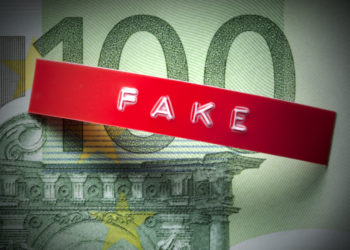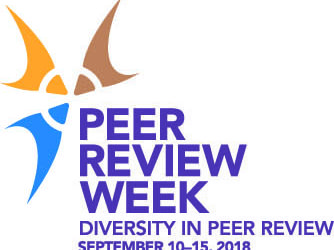In an age where journalism is underfunded, underappreciated, and more important than ever, I’m here to applaud the International Consortium of Investigative Journalists (ICIJ), which deserves acclaim for coordinating coverage of predatory publishing across multiple countries:
. . . a group of more than a dozen media organizations including the New Yorker, Le Monde, the Indian Express and the Korean outlet Newstapa took part in the investigation.
In the same timeframe the US Federal Trade Commission (FTC) released its motion for summary judgment regarding one of the most prominent predatory publishers, OMICS, an entity I’ve discussed here before (citing an article from nearly a year ago which confirms my assertion that Bloomberg BusinessWeek often breaks stories months before anyone else even laces up their shoes).

There’s a lot to read in the stories produced so far. The German coverage asserts that more than 5,000 German scientists have published in pseudo-scientific (i.e., predatory) journals. The “pay and publish” paradigm is heavily featured in the Indian Express coverage, which has two parts, as well as an interview with the founder and CEO of OMICS, Srinubabu Gedela, where he comes across as one part evasive (eliding simple questions with double-talk), one part ignorant (calling the First Amendment of the US Constitution “the US Freedom of Speech Act”), for a sum total of untrustworthy.
Because our industry has been following predatory publishing so well for so long, because the past days have been filled with messages on prominent listservs about these specific articles, and because much has been written on this blog about predatory publishers, I won’t bore you with the details. There are rational points to be made about scientists choosing this route with full knowledge that they’re slumming — if cynicism is high, you could say it takes two to tango, or that sometimes exploitation is mutual. There are rational points to be made about whether these journals and publishers are pressure valves, early market forces, and so forth. However, in light of these reports and the public awareness and perceptions they will create, these points may be moot or too subtle to matter. These reports will resonate with the public, and will indicate that the predatory publishing problem is not well-controlled by those entrusted to keep order.
These reports will resonate with the public, and will indicate that the predatory publishing problem is not well-controlled.
Regulators have also taken notice. In China, new reforms are cracking down on academic misconduct, including a black list of “poor quality” journals, their code for predatory. The FTC’s crackdown on OMICS has been under way for a while, and is about to reach resolution, it appears, with a motion for summary judgment (meaning, the FTC thinks OMICS doesn’t have any remaining plausible defense) filed this May.
To me, even in the midst of all the fine investigative journalism, the most substantial reading is the FTC motion for summary judgment against OMICS, a motion which may place the future of OMICS on the line as the FTC is seeking monetary relief upwards of US$50 million in addition to limits on how OMICS can operate going forward. The motion details in clear language how Gedela micromanaged OMICS, and how OMICS continued its misleading practices even after the FTC’s preliminary injunction. The FTC’s admirably plain-spoken motion labels much of what OMICS represents as peer review “a sham” and “phony,” cites stings that caught OMICS out as evidence of inadequate controls and misrepresentations, reveals that most records of review transactions show “minimal notation that a given manuscript was submitted and accepted,” and so forth.
In a particularly “laugh or you’ll cry” passage, the FTC reminds us that basic things like counting still matter:
Defendants [OMICS] have also been unable to support their representations with any documentation showing tens of thousands have agreed to serve as editors. In discovery in this action, Defendants were asked to identify the purported editors, and to produce confirmation that these individuals had, in fact, agreed to serve as editors. The lists of purported editors and reviewers that Defendants assembled in response do not contain 50,000 names; they name only 14,598 unique individuals. . . . Further, after being compelled by this Court to provide a complete response to discovery requests for all documents reflecting agreement to serve as an editorial board member or to be affiliated with a journal, Defendants’ response identified only 380 individuals who had agreed to serve as an editor . . .
For those of you parsing the numbers, claiming 50,000 off a base of 380 represents means OMICS lied about 99.24% of its editors and reviewers.
The FTC’s motion, if granted, represents a potential death blow for the company. The US has jurisdiction over more than $50 million in OMICS revenues because the company used US banks and corporate registrations. The FTC is after nearly all of OMICS revenues from 2011 through mid-2017. If you’re interested in following this aspect, the FTC’s case against OMICS can be tracked online.
To me, what needs to be asked is this — How did we get here? What failures of our industry allowed predatory publishing to become the public shame it appears to have become?
First and foremost to me, there isn’t enough money in a growing system when it comes to funding long-term academic and research careers, research information, and information generally. The mental model is wrong. Long-standing trends — libraries getting short shrift in institutional budgets, huge surges in research outputs as China and India rose in the market, organic growth in established markets due to STEM initiatives — have combined to create a highly pressurized environment with the same incentives but fewer ways to meet them.
There was coincidentally a Silicon Valley belief system touting how “information wants to be free” and leading people to believe that Internet publishing could be done cheaply, easily, and by everyone (“publishing is just a button”). On the publisher side, this encouraged a lot of new businesses with short-term orientations. Some of these have succeeded and done well, but others were never managed to do anything but make a quick buck. On the researcher side, the noises coming from Silicon Valley and the abundance of free, advertising-driven services decreased skepticism because it seemed as if new publishers were innovative, legitimate, and catching the wave of the future. OMICS and others donned this sheep’s clothing to prey on the optimism or needs of unsuspecting authors.
Pressures from advocates, governments, and funders to shift to a supply-side business model based on APCs have also played a role, legitimizing the model while opening the door to a few problems that unethical businesses were able to quickly amplify into big money because of other problematic pressures in the system:
- Quick money
- Low accountability
- Low barriers to entry
If the past few years have taught us anything, it’s that low barriers to entry for information and media distribution is an invitation for trouble. We’ve seen personal information foisted, elections in multiple countries manipulated by using — as intended — the tools designed around low barriers to entry, and thorny problems emerge around trust, truth, and facts because now anyone can hop onto the Interwebz and spin, fabricate, and fantasize. Predatory publishers are just our version of these problems.
Much of our infrastructure — both technical and cultural — has been based on an assumption of the higher barriers to entry that come from the subscription model, which takes years to pay off, requires complex and real systems to execute effectively, and only works if readers or their proxies pay. The subscription model requires more capital, more patience, and more expertise to implement. The APC model allows for quick cash and creates an alignment of interests between the author and the publisher that some — both authors and publishers — exploit unethically. Authors turn a blind eye to suspicious claims, publication lists get filled quickly, and pop-up publishers make easy money fast.
A more fundamental factor that helped propel the APC model into existence and led authors to take shortcuts to publication is the much more intense “publish or perish” culture that has developed in academia over the past 20 years as government funding, tenure systems, a surplus of qualified PhDs, the emergence of India, China, and other newer scientific cultures into the publication realm, and other factors have become woefully misaligned — that is, too little money, too many researchers, too much research, too few jobs. There needed to be a pressure valve, and when legitimate publishers couldn’t meet the need, shadowy publishers were happy to step in to help desperate or exhausted authors.
There is also legitimate questions to ask about academic culture, naïveté, and openness, raised nicely in a recent episode of On Point entitled, “U.S. Colleges: A Front Line For International Spying.” The episode labels higher education “a frontline in international espionage,” and the host notes:
Ignorance about intellectual property safeguards, or even hostility toward them, is rife among science students and faculty. There is “zero instruction” on the topic outside law school, [John] Villasenor, [a professor of electrical engineering at the University of California, Los Angeles,] told me. Significant proportions of UCLA engineering graduate students whom he surveyed couldn’t define a patent (21 percent), copyright (32 percent), trademark (51 percent), or trade secret (68 percent). Never contemplating the possibility of espionage, American professors sometimes comply with requests from acquaintances or strangers overseas for research advice, manuscript reviews, or unpublished data.
With little understanding of or respect for intellectual property, including their own, academics remain a soft target for people making boasts about the reach, expertise, speed, and quality of their publishing practices.
The academic culture has both virtues and blindspots. Its mix of strong incentives and poor support has driven some desperate or ill-informed authors to embrace a business model extreme (predatory publishing) that is undercutting the social status of science and academic research. The culture is being exploited by foreign adversaries, with the supposedly “smart people” being caught out as relatively ignorant of basic, practical aspects of intellectual life and information purveyance. And it is training more people than it can support in a form of exploitation that fits with the cynicism and self-regard of the times.
Publishing culture also needs a hard look. We’ve tolerated, even embraced, business models that we claim have virtues, even if these have proven elusive, while we have done little to ensure that their extreme versions and exploitation aren’t cause for larger problems. We’ve not examined our own role in information curation and filtering sufficiently, perpetuating for perhaps too long the timeworn but increasingly irrelevant and questionable philosophies of Web 2.0 and Silicon Valley. It’s coming back to bite us. The public won’t differentiate and think hard about what they read in the press coverage. If the FTC seizes $50 million from OMICS, the headline will only register as another black mark against academic and scholarly publishing. It will look like predatory publishers have been allowed to run amok. It will look like we can’t keep our own house in order. The meta-brand of scholarly publishing will be tarnished, and we will have gained the attention of regulators.
Predatory publishers may be the target of investigations and regulatory action, but there could well be significant collateral damage.
Discussion
6 Thoughts on "Dropping the Hammer — Predatory Publishers Get Pounded by Regulators and the Press"
Nice piece, Kent, thanks. One comment, really in response to the quote from John Villesanor:
Ignorance about intellectual property safeguards, or even hostility toward them, is rife among science students and faculty. There is “zero instruction” on the topic outside law school, [John] Villasenor, [a professor of electrical engineering at the University of California, Los Angeles,] told me.
This isn’t strictly true. On virtually every college campus of which I’m aware (including the one where I am now), instruction on copyright and help with compliance are very much available. However, this instruction is usually provided by the library and there isn’t always a lot of interest in it.
That being said, I do have to agree with Villesanor that “ignorance about intellectual property safeguards, or even hostility toward them, is rife among science students and faculty,” or at least among students, and I my impression is that it’s growing–and it seems to me that my library colleagues’ enthusiasm for countering or discouraging this hostility is diminishing.
This is an excellent article about what is truly a stain on the academic community and scholarly publishing. I think it’s extraordinary how many failure points there have been in the predatory publisher story.
I don’t believe that predatory publishers are an extreme manifestation of the APC pay-to-publish business model – they’re a logical result. The vanity press showed us this hundreds of years ago. It’s not like it was a new or unexpected consequence. Reputable APC-funded publishers have to put in real effort to avoid the conflict of interest inherent in the business model by separating editorial work from the business side, but there will always be the temptation.
Furthermore, virtually everyone has been complicit in allowing this scandal to develop. Institutions give little guidance to academics and apply no restrictions on journal choice lest they be accused of restricting academic freedom. Funders apply no penalties for publishing in predatory journals. Crossref registers DOIs for OMICS and is presumably happy to collect the associated fees. https://search.crossref.org/?q=publisher_str=OMICS+Publishing+Group
There have been publications and blog posts warning about the predatory publisher problem for years and yet I am not aware of any major action from academics, societies, funders or institutions.
I wanted to look at funders for OMICS in CrossRef, so used your link: https://search.crossref.org/?q=publisher_str=OMICS+Publishing+Group. Unfortunately that link just seems to search for the terms OMICS, Publishing, and Group in the article citation – the search filters show that the top 10 publishers in the list do not include OMICS. Many are articles about predatory publishing. Some include “Publishing Group” but not OMICS. So I can’t tell if CrossRef does register DOIs to OMICS publications.
Is there any way to search to find just OMICS publishers in CrossRef metadata search? I work for a funder and would like to see what if any research from that funder is in OMICS publications, assuming OMICS lists funders in CrossRef records.
Use the Crossref Title List search tool at https://apps.crossref.org/titleList/. Select Publisher, type in OMICS Publishing Group, and hit Search, and you should get a list of the OMICS titles that Crossref has indexed.
You can also find other publishers off Beall’s list there, including ‘ABC Journals’ and ‘Atlas Scienfitic Publishing, LP’. Yes, ‘Scienfitic’.
If you have a bit more savvy, you could also use the Crossref API to get a bit more detail:
http://api.crossref.org/works?facet=publisher-name:*
Kent, another truly excellent article, reflecting how we have allowed silicon valley spin doctors to send our whole industry into a spin for the sake of advertising and a quick buck. Now we stand at a precipice and there appears to be no going back — APCs appear to be here to stay. Delta Think just published research showing that fully OA journals are growing in impact (based on Scopus and JCR) at a faster rate than hybrid or non-OA journals



